Birdfinding.info ⇒ Generally common in western Puerto Rico and rare in the east. Most numerous in the southwest, especially at Maricao State Forest and Boquerón and Cabo Rojo National Wildlife Refuges. Should also be found on most visits to Guánica, Susúa, and Río Abajo State Forests. Occasionally reported around San Juan and in El Yunque National Forest.
Puerto Rican Pewee
Contopus blancoi
Family: Tyrannidae
Endemic to Puerto Rico, where it is common in wet and dry forests at all elevations in the western half of the island. Inexplicably rare and sporadic in the eastern half of the island.
Its overall distribution pattern and occupation of habitat are peculiar. It appears to reach its peak abundance in the dry southwestern coastal forests, but otherwise is found mostly in humid forests of the western mountains and hill country. Outside of these areas, it leaves large amounts of apparently suitable similar habitat unoccupied.
Identification
Unique in its range: a small flycatcher with buffy underparts and orange lower mandible. Lacks distinct wingbars and facial markings.
Highly variable in the brightness of its buffy underparts. Many individuals are richly colored orange-buff, usually with a partly grayish vest, but some are mostly drab gray below with just a faint buffy wash.
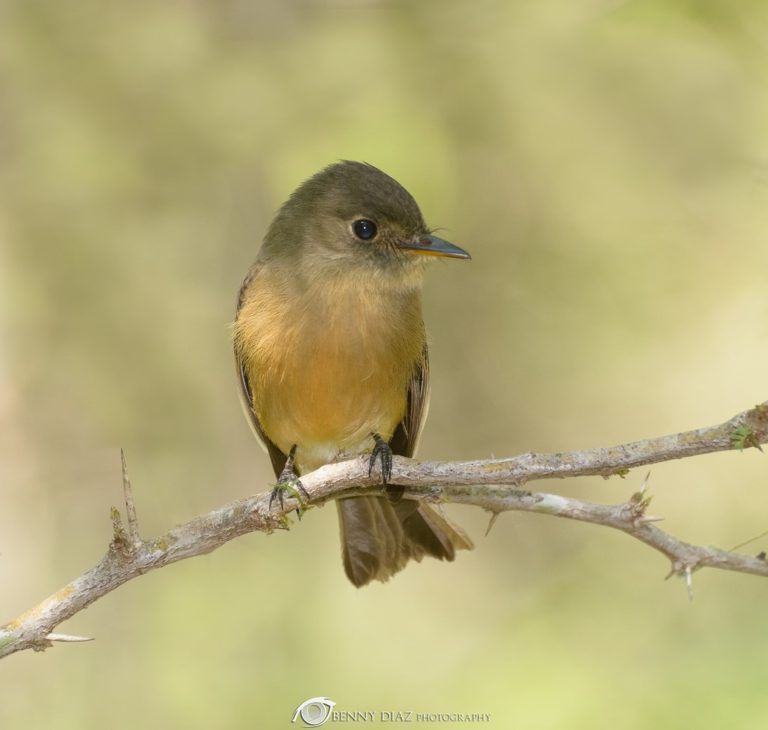
Puerto Rican Pewee, showing dark upper mandible. (Puerto Rico; November 15, 2015.) © Benny Diaz
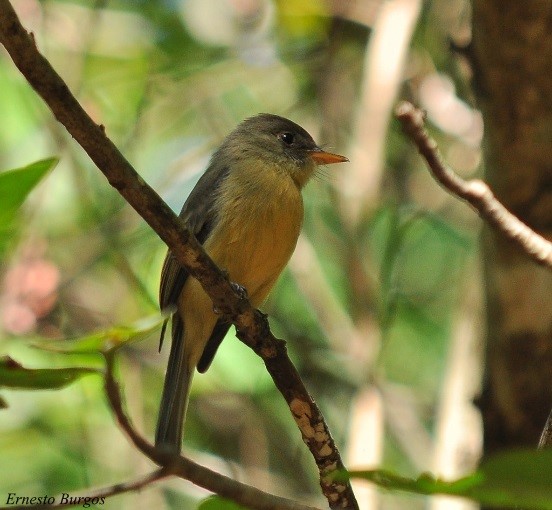
Puerto Rican Pewee. (Cabo Rojo National Wildlife Refuge, Puerto Rico; January 28, 2009.) © Ernesto Burgos
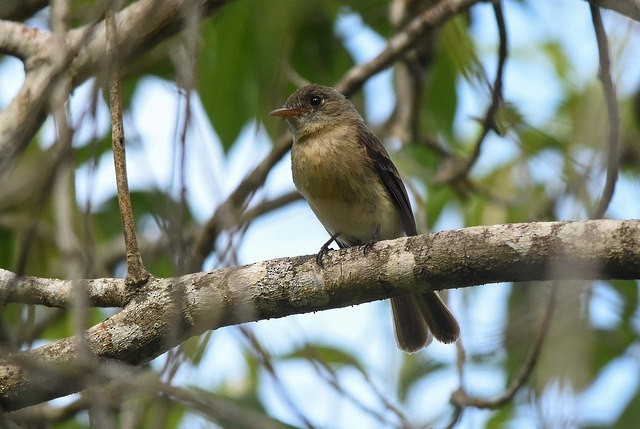
Puerto Rican Pewee, a notably drab, gray-chested individual. (Maricao State Forest, Puerto Rico; May 18, 2015.) © Daniele Mitchell

Puerto Rican Pewee, showing buffy highlights in margins of wing feathers. (Cabo Rojo National Wildlife Refuge, Puerto Rico; October 14, 2012.) © Ernesto Burgos
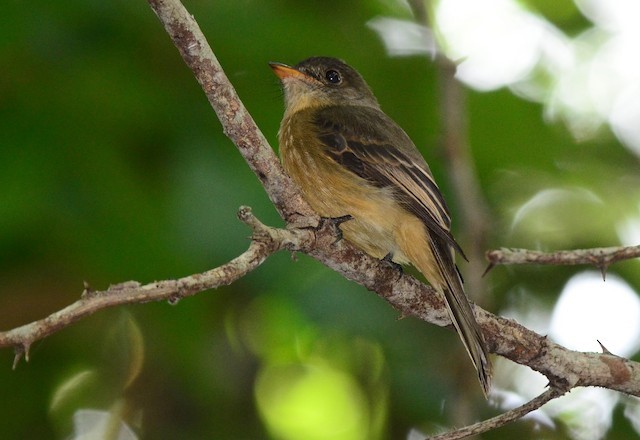
Puerto Rican Pewee, showing buffy-brown underparts. (Boquerón National Wildlife Refuge, Puerto Rico; December 7, 2016.) © Steve Tucker
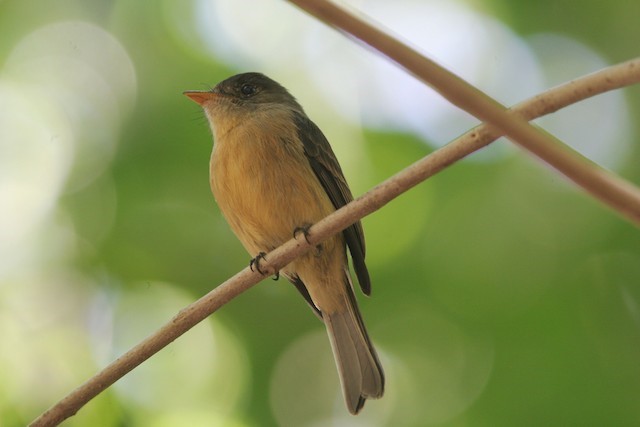
Puerto Rican Pewee, an unusually bright individual, lacking the typical gray vest. (La Parguera, Puerto Rico; December 28, 2011.) © Brad Bergstrom
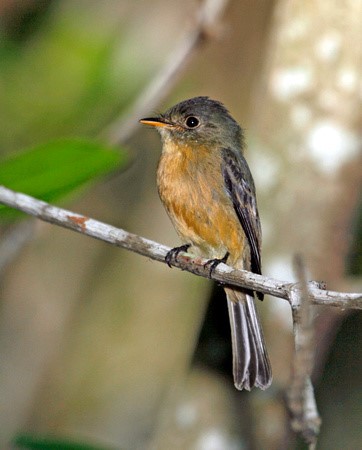
Puerto Rican Pewee, a bright orange-breasted individual, showing contrast between upper and lower mandibles. (Cabo Rojo National Wildlife Refuge, Puerto Rico; November 8, 2008.) © Alfredo Colón
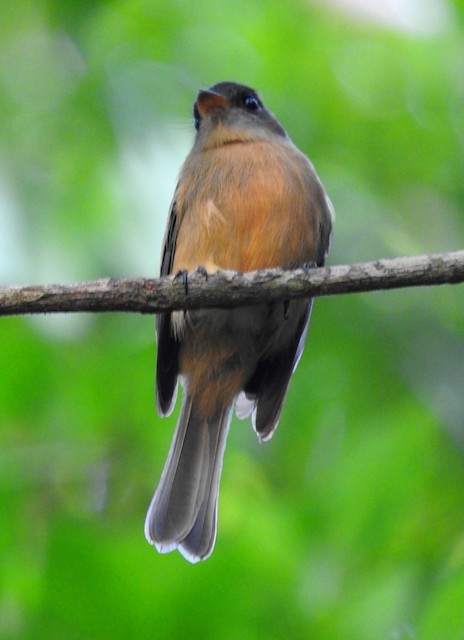
Puerto Rican Pewee, showing rich orange mixed with gray in underparts. (Guajataca State Forest, Puerto Rico; November 28, 2017.) © Eric Haskell

Puerto Rican Pewee. (Guánica State Forest, Puerto Rico; January 30, 2010.) © Steve Metz
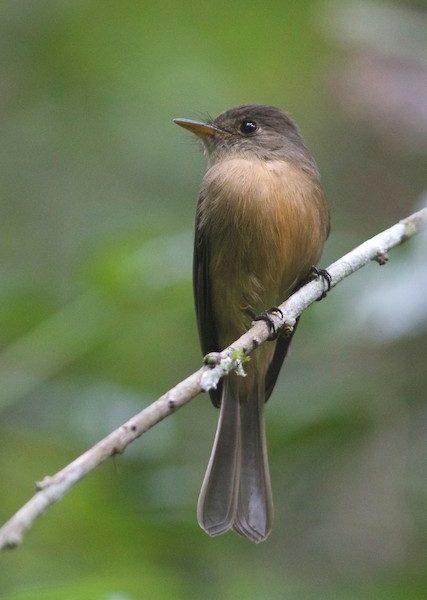
Puerto Rican Pewee. (Río Abajo State Forest, Puerto Rico; January 25, 2016.) © Doug Hitchcox
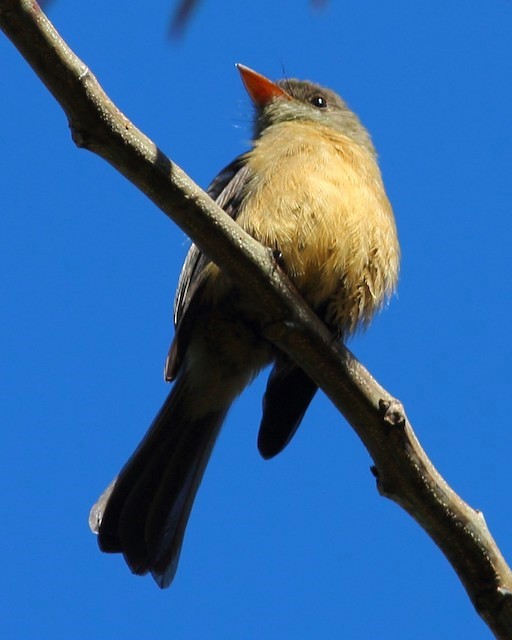
Puerto Rican Pewee, a uniformly buffy individual, showing its orange lower mandible. (Maricao State Forest, Puerto Rico; March 21, 2012.) © Alan Selin
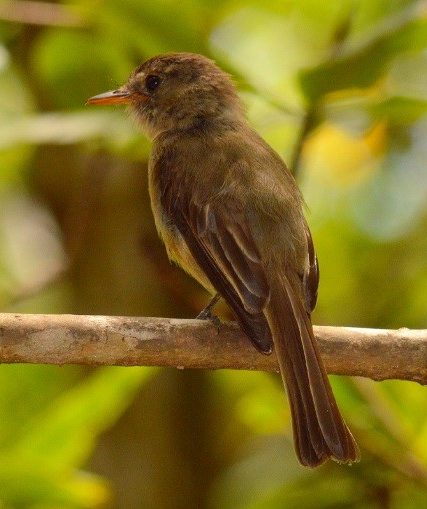
Puerto Rican Pewee. (Cabo Rojo National Wildlife Refuge, Puerto Rico; June 23, 2013.) © Ernesto Burgos
Voice. Common call is a high trill, often about two seconds, but variable:
Also chirps and warbles, usually in two-syllable phrases.
Notes
Monotypic species. Traditionally considered a subspecies of Lesser Antillean Pewee, C. latirostris, but differences in plumage and especially voice strongly suggest that they should be classified as separate species.
Frontiers of Taxonomy: The “Lesser Antillean Pewee” Complex. The three similar forms, latirostris of St. Lucia, brunneicapillus of Dominica, Guadeloupe, and Martinique, and blancoi of Puerto Rico, have been regarded either collectively as the Lesser Antillean Pewee, C. latirostris, or as three species (e.g., Raffaele et al. 1998). Although the current consensus is to lump them together, it seems likely that they will ultimately be recognized as independent.
The differences in their vocalizations appear sufficient to classify them as separate species. Puerto Rican Pewee, C. blancoi, has a varied repertoire of trills, chirps, and warbles, all with a sweet, musical quality. Lesser Antillean Pewee, C. brunneicapillus, has a simple two-note call with a rougher, more nasal tone. St. Lucia Pewee, C. latirostris, has a strong, nasal call, often followed by brief chattering phrases.

Puerto Rican Pewee, C. blancoi, showing typical coloration. (Maricao State Forest, Puerto Rico; December 26, 2009.) © Guy Poisson

Lesser Antillean Pewee, C. brunneicapillus, a pale, yellowish individual. (Martinique; October 13, 2006.) © Vincent Lemoine
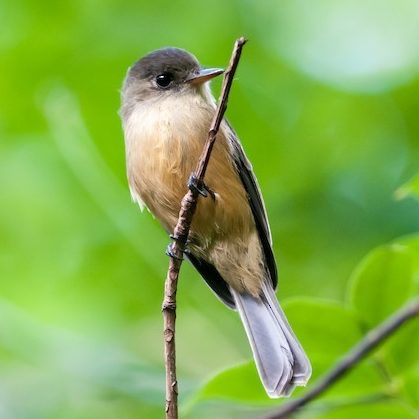
Lesser Antillean Pewee, C. brunneicapillus, buffier than average. (Forêt de Maisoncelle, Guadeloupe; October 2, 2013.) © Frantz Delcroix

St. Lucia Pewee, C. latirostris, showing typical coloration. (Des Barras Road, Dauphin, St. Lucia; November 26, 2015.) © Kyle Kittelberger
The three forms also differ in plumage. All have buffy underparts, but with consistent differences in intensity and pattern. St. Lucia Pewee is the most colorful: rich orangey-buff from chin to vent. Lesser Antillean Pewee is the drabbest: usually has a whitish chest and faint buffy wash on the breast and belly. Puerto Rican Pewee is intermediate: spanning the spectrum between the other two, but usually shows a distinct grayish vest, and its throat is whitish.
References
Cole, K.K. 2013. Lesser Antillean Pewee (Contopus latirostris), version 1.0. In Neotropical Birds Online (T.S. Schulenberg, ed.). Cornell Lab of Ornithology, Ithaca, New York. https://doi.org/10.2173/nb.leapew1.01.
eBird. 2018. eBird: An online database of bird distribution and abundance. Cornell Lab of Ornithology, Ithaca, N.Y. http://www.ebird.org. (Accessed November 6, 2018.)
Farnsworth, A., and D. Lebbin. 2017. Lesser Antillean Pewee (Contopus latirostris). In Handbook of the Birds of the World Alive (J. del Hoyo, A. Elliott, J. Sargatal, D.A. Christie and E. de Juana, eds.). Lynx Edicions, Barcelona. http://www.hbw.com/node/57375. (Accessed October 26, 2017.)
Raffaele, H. 1989. A Guide to the Birds of Puerto Rico and the Virgin Islands. Princeton University Press, Princeton, N.J.
Raffaele, H., J. Wiley, O. Garrido, A. Keith, and J. Raffaele. 1998. A Guide to the Birds of the West Indies. Princeton University Press, Princeton, N.J.
